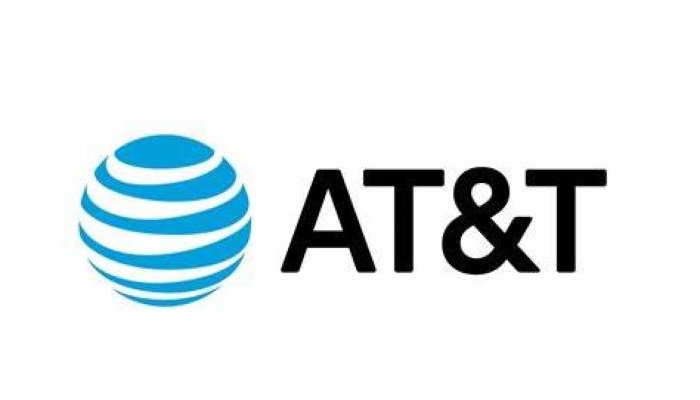Technology
Taking 5G to the Next Level with Standalone 5G

AT&T Labs makes industry-first 5G SA Uplink 2-CA data connection in the U.S. to improve upload speeds, with additional speed and other upgrades in the works
AT&T is architecting tomorrow’s wireless network to connect people to greater possibility. As engineers, we design, build, test, refine and repeat so that you can get more out of your 5G connection and developers can build and deploy the next generation of apps and services.
A key part of this evolution is the critical transition phase we are entering in scaling from 5G non-standalone (NSA) to 5G standalone (SA).
How does Standalone take 5G to the next level? Unlike 5G NSA that still relies on a 4G LTE core, 5G SA uses a dedicated 5G core that can unlock capabilities like faster upload speeds, ultra-low latency, ultra-high reliability and edge functions. This technology will be key to business opportunities like the next generation of connected cars.
We have said that we plan to deploy Standalone 5G when the ecosystem is ready, and AT&T is charging forward to advance SA ecosystem readiness. Businesses and developers will be some of the first to take advantage of the new technologies standalone 5G enables as we continue to move from research & development to their deployment.
Uplink: where challenge meets opportunity
This new age of connectivity is not only about consuming more content but also generating more content than ever before. Demand for uplink capacity and speed continues to increase, about 30% a year in AT&T’s mobility network.
Whether you are uploading large files, on a video call with family, live streaming, cloud gaming or using extended reality applications, the network is facing surging upstream traffic demands it never has before. Our latest network innovations are complex but are all about helping meet this new demand.
Just a few weeks ago, we completed the first 5G SA Uplink 2-carrier aggregation data call in the U.S. Carrier aggregation (CA) means we are combining or “aggregating” different frequency bands to give you more bandwidth and capacity. For you, this means faster uplink transmission speeds. Think of this as adding more lanes in the network traffic highway.
No one in the U.S market has successfully aggregated two carriers in 5G SA uplink – until now. This is part of our ongoing effort to provide greater reliability for our customers.
The test was conducted in our labs with Nokia’s 5G AirScale portfolio and MediaTek’s 5G M80 mobile test platform. We aggregated our low-band n5 and our mid-band n77 spectrum. Compared to our low-band n5 alone, we saw a 100% increase in uplink throughput by aggregating our low-band n5 with 40MHz of our mid-band n77. Taking it a step further, we achieved a 250% increase aggregating 100MHz of n77. The bottom line? We achieved incredible upload speeds of over 70 Mbps on n5 with 40MHz of n77 and over 120 Mbps on n5 with 100MHz of n77.
While carrier aggregation is like adding more traffic lanes in the highway, adding another vehicle to carry traffic is another way we are managing surging uplink demand. We are doing this via a two-layer uplink MIMO on time division duplex (TDD) in our mid-band n77. MIMO combines signals and data streams from multiple antennas (“vehicles”) to improve signal quality and data rates. This feature will not only improve uplink throughput but also enhance cell capacity and spectrum efficiency.
Network design and device readiness go hand in hand
Although we continue to make progress in enhancing uplink coverage, we haven’t forgotten about the downlink. Enhanced downlink and uplink carrier aggregation capabilities work together to bring the 5G SA performance today’s technologies need.
Last fall, we completed a 5G SA four component carrier downlink call by combining two FDD carriers and two TDD carriers. These capabilities allow AT&T devices to aggregate our mid-band n77 in the C-Band and 3.45GHz spectrum ranges. Compared with low band and mmWave spectrum, mid-band n77 provides a good balance between coverage and speed. This follows the 5G SA three component carrier downlink feature that we introduced last year to 2022 AT&T Flagship devices which combines one frequency division duplex (FDD) carrier and two TDD carriers.
In the coming months, AT&T will also enable 5G New Radio Dual Connectivity (NR-DC), aggregating our low and mid-band spectrum with our high-band mmWave spectrum on 5G SA. Our labs have achieved 5G NR-DC downlink throughput speeds of up to 5.3Gbps and uplink throughput speeds of up to 670Mbps. This technology will help provide high-speed mobile broadband for both downlink and uplink in stadiums, airports, and other high-density venues.
The 5G SA ecosystem is rapidly evolving, with new technologies and capabilities being introduced to provide differentiated experiences. Here are some features that are on the horizon for 5G SA:
- Specialized Network Services – think network slicing, precision location, private routing, etc. – for tailored network solutions to meet specific user requirements;
- Non-terrestrial network solutions to supplement coverage in remote locations ; and
- Reduced capability 5G (RedCap) for a new generation of 5G capable wearables, industrial IoT or wireless sensors and other small form factor consumer devices.
AT&T is dedicated to being the best connectivity provider. The 5G SA ecosystem is rapidly evolving, with new technologies and capabilities being introduced to set the foundation for next generation applications and services.
-
Auto2 years ago
Honda Marine Debuts All-New BF350 Outboard Company’s First V8 Motor Available Commercially, Flagship Model Offers Premium Power and Unparalleled Performance for Extraordinary Boating Experiences
-
Auto2 years ago
New Features Further Increase Desirability Of Bentayga Range
-
Technology2 years ago
Oracle Partners with TELMEX-Triara to Become the Only Hyperscaler with Two Cloud Regions in Mexico
-
Auto2 years ago
Honda and Acura Electric Vehicles Will Have Access to Largest EV Charging Networks in North America Aided by New Agreements with EVgo and Electrify America
-
Lifestyle2 years ago
2023 Nike World Basketball Festival Brings the Best of Basketball Style, Culture and Community